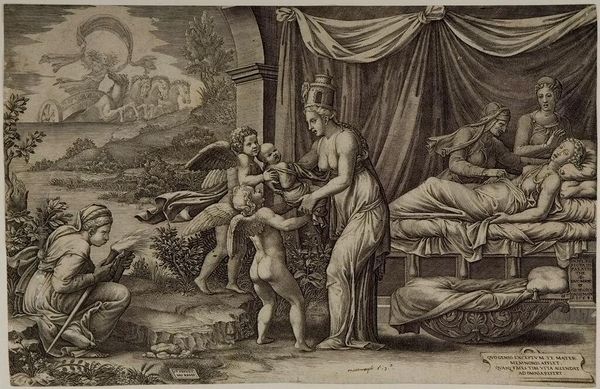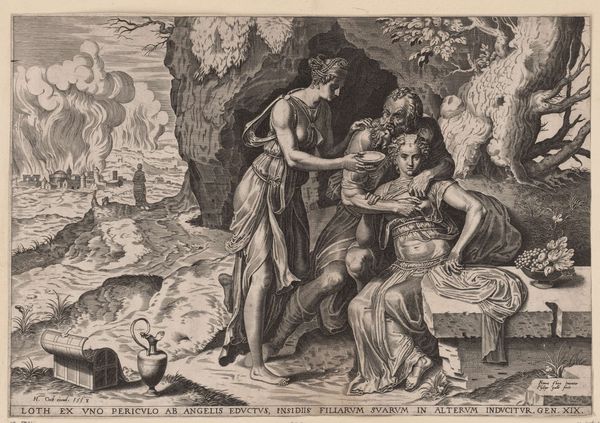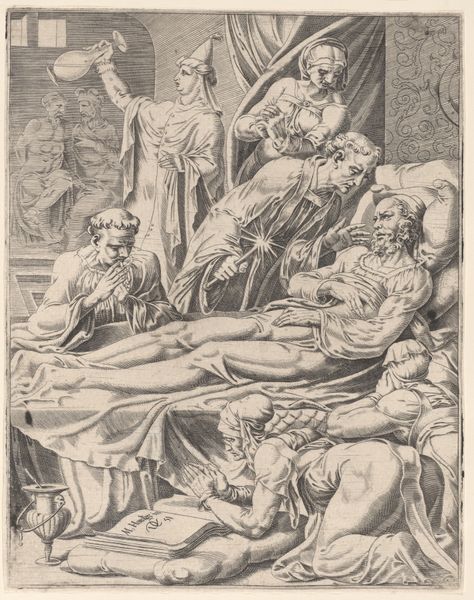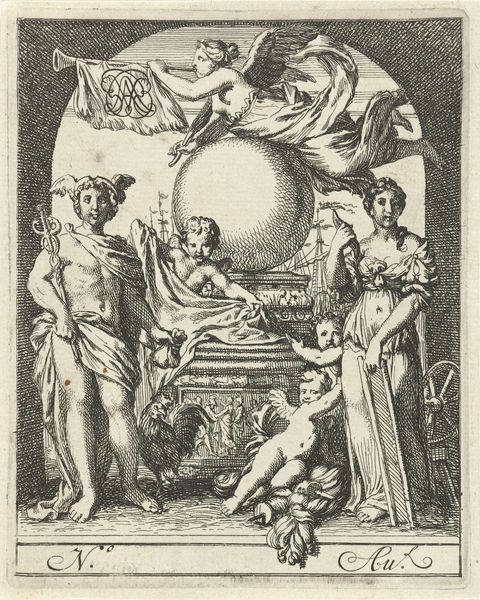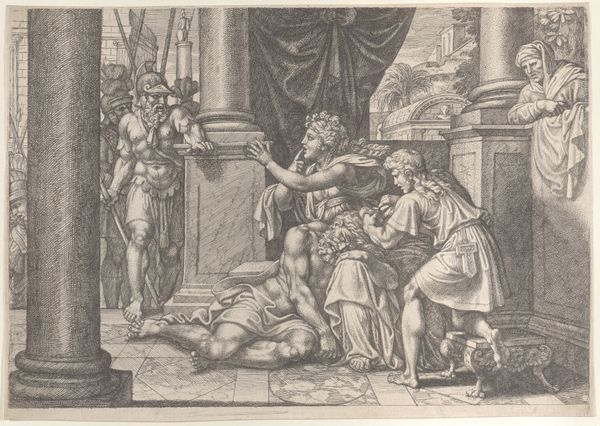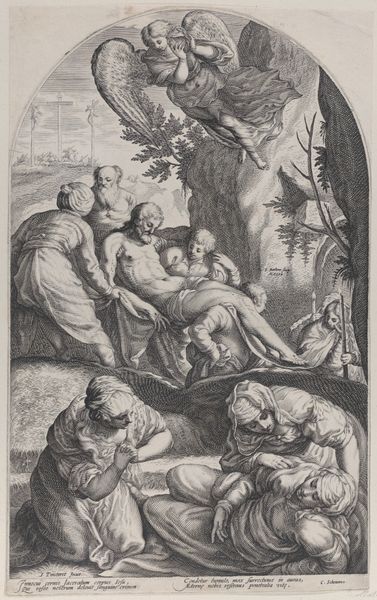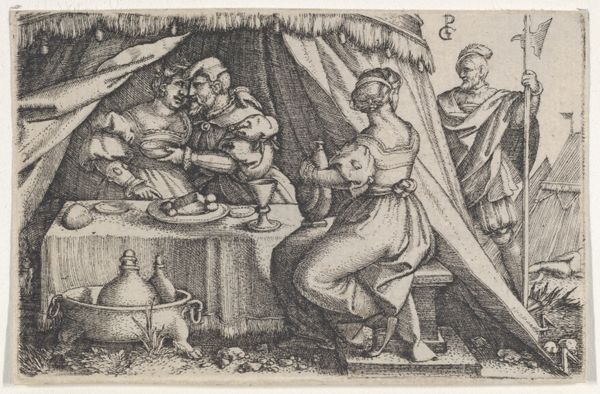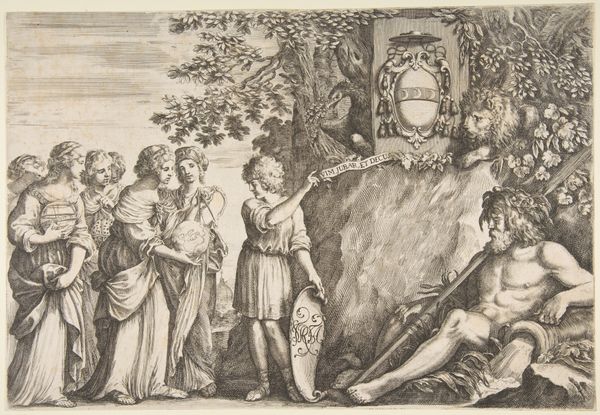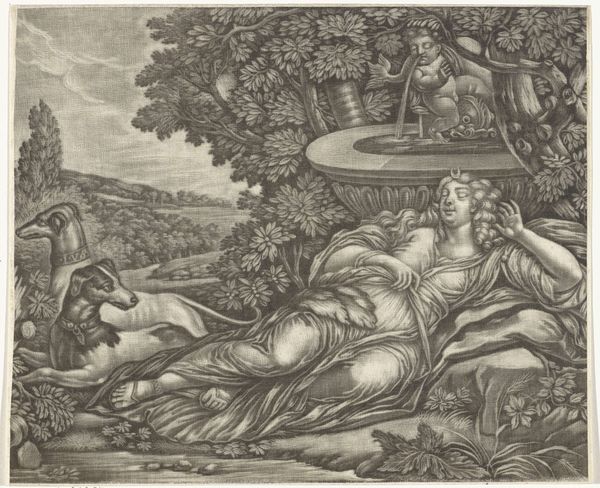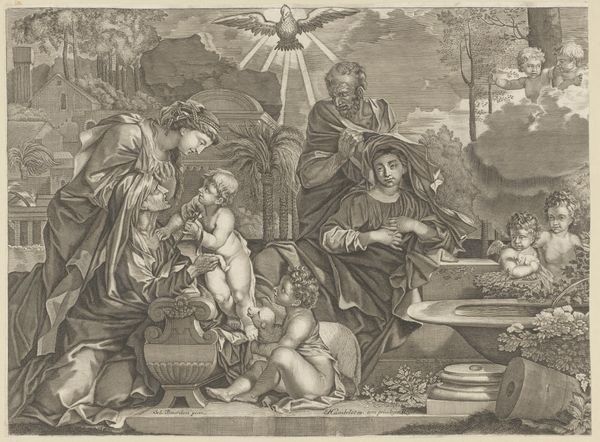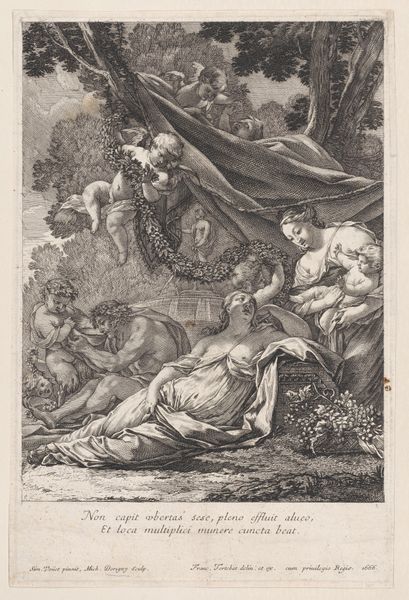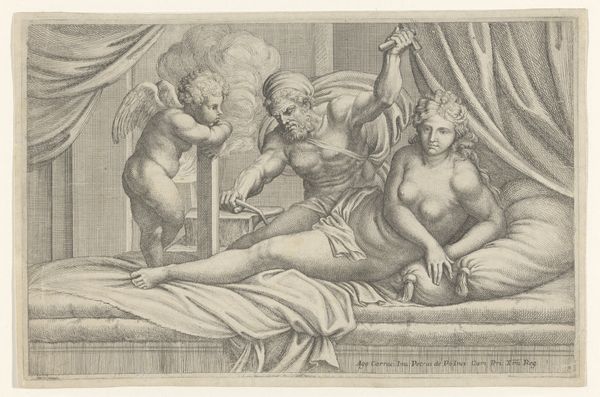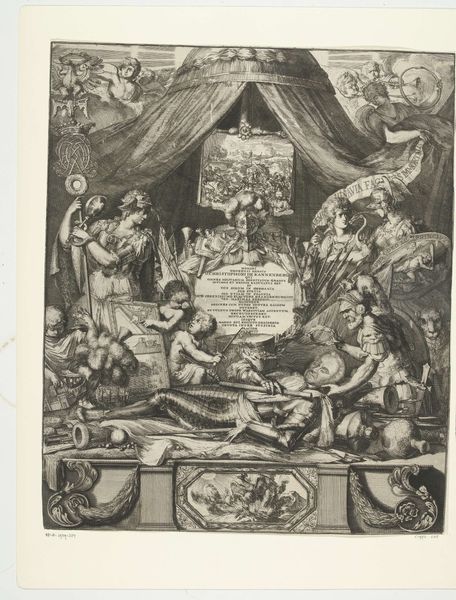
drawing, print, etching
#
drawing
#
allegory
# print
#
etching
#
mannerism
#
figuration
#
history-painting
#
italian-renaissance
Dimensions: Sheet (Trimmed): 10 13/16 × 16 5/16 in. (27.4 × 41.5 cm)
Copyright: Public Domain
Editor: This is Giorgio Ghisi's "Allegory of Birth," created in 1558. It's a wonderfully detailed etching and print, but the allegorical aspect makes it hard to grasp right away. There are so many figures packed into this composition. What's the story this piece tells? Curator: That feeling of being overwhelmed is partly the point! Mannerism, as a style, was about artifice and complexity. This print was not just about depicting a birth but making a statement about learnedness. The abundance of figures, classical references, and intricate details was a visual display of intellectual status aimed at a learned, probably courtly, audience. Do you notice the various scenes depicted? Editor: I see a woman in labor, another holding a newborn, and even a chariot in the upper-left pulled by what looks like...horses? The woman holding the baby is wearing this strange building-like hat, it must mean something! Curator: Indeed. It reflects the fascination with antiquity that marked the Italian Renaissance. The “building-like hat” could be referencing the ancient goddess Cybele, associated with fertility and nature. Remember, prints like these were luxury items. They acted like portable museums, disseminating knowledge of classical imagery and contemporary artistic trends among the elite. Why do you think they are hard to read for modern viewers? Editor: Maybe we're too used to simpler narratives or have lost touch with the classical references. Today, we are much more used to images with clearer social messaging, for example. Curator: Precisely. "Allegory of Birth" shows us how art in the Renaissance was entangled with the period's sociopolitical context, used as a tool to showcase learning and reinforce social hierarchies. Editor: I see it now; it's less about pure representation and more about performing erudition and cultural capital. Thanks! Curator: And thanks to you. This piece also reminds us that what we see in art is always mediated by our own social and historical moment.
Comments
No comments
Be the first to comment and join the conversation on the ultimate creative platform.
